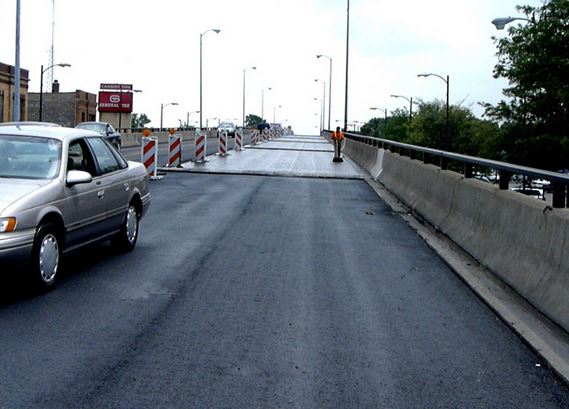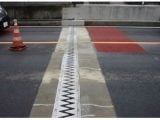
Bridge Pavement functions and classifications
20 February 2020Bridge Pavement Functions and Classifications
The pavement is the important portion of the bridge deck that vehicles come in direct touch, and a structurally sound, smooth riding, and long lasting pavement is very important for bridge users.
The bridge pavement is used for protecting the slab deck from the impact due to traffic load, rain-water, and other meteorological conditions, and providing durable and comfortable traffic conditions.
A rough pavement is uncomfortable to the drivers, and a quality pavement should be designed and constructed according to appreciate design specifications for the pavement.
1. Functions and Requirement of Bridge Pavement
The main functions of bridge pavement include:
(1) prevent the vehicle tie or the caterpillar track directly wear the bridge deck
(2) protect the bridge deck and main girder from water erosion
(3) dispersion of the concentrated truck load
Bridge pavement quality is important for the survivability and durability of the bridge structures. Nonetheless, bridge deck pavements must meet a large number of requirements related to strength, wear-resisting, crack-resisting, antiskid, and good integral with bridge deck.
The bridge pavement shall have adequate resistance to permanent deformation, vehicle sliding without cracking, etc. It also must protect and seal the underlying supporting structure as this determines to the durability of bridge superstructure.
The pavement should also be able to absorb traffic loads and transfer them tothe deck and supporting structures but remain even within allowable deformation and provide good antiskid conditions for vehicles. Besides, they must protect the bridge structure from surface water.
2. Classifications of Bridge Pavement
Cement concrete pavement and asphalt pavement are most often used pavement method in bridge structures. Cement concrete pavement has advantages like less expensive, wear-resisting, suitable for high-traffic bridge,environmental sustainability, durability, and requires less repair and maintenance over time, but requires longer curing time. On the other hand, the asphalt pavement requires less curing time and has lighter weight, easy repair or replacement, but easy to get aging and deform.
A cement concrete pavement shall be constructed simultaneously with the slab concrete in order to form an integral structure. If casted separately with slab concrete, the pavement concrete will be vulnerable to drying shrinkage crack because of their relatively thin thickness.
There is a concern of stripping due to bridge vibration, impact of vehicles, and rain water permeation. For this reason, the pavement concrete and deck concrete should be constructed at the same time but not separately. If rainwater permeates the concrete slab, notonly causing the corrosion of the reinforcements or any other structural steel in the concrete, but also accelerate the concrete deterioration, particular for the deck under repeated load in the service condition.
These have remarkable effect on the durability and load carrying capacity of the bridge. Because of this, adequate sealing measures should be taken not only for the concrete deck but also for the members near to expansion joint and other accessory devices.
In general, the asphalt bridge pavement system consists four different layers: a sealing layer, a waterproofing layer, a protecting layer, and surface layer (asphalt). For an asphalt pavement, a waterproofing layer should be used to present rainwater permeation. Although different application techniques and materials can be used on steel and concrete bridge decks, the general construction steps on a bridge deck starts by surfacing of thedeck, followed by sealing layer, a waterproofing layer, a protecting layer, and the surface layer on top.
The surface and subsurface drainage system should be applied on both steel and concrete decks. The sealing layer can be made from various materials, including bituminous materials. The bridge pavement surface is generally built as a parabola curve with the cross slope of 1.5%–2%. The sidewalk pavement surface is usually built as straight line with a cross slope of 1%.








